8. Inherent Vice (Paul Thomas Anderson, 2014)
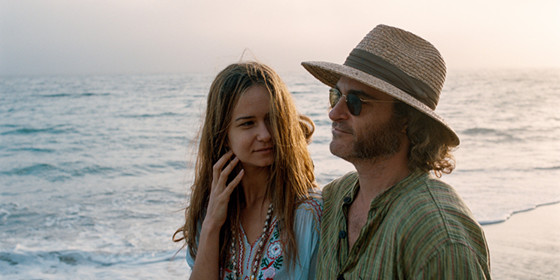
The “collaboration” of Thomas Pynchon and Paul Thomas Anderson made for an intriguing confluence between two formidable creative forces. The novels of Pynchon shaped the late 20th century with its themes of paranoia, drugs, labyrinth politics, among many, many other subjects. With Inherent Vice the world of 1970 Southern California comes alive within a haze of intrigue.
Joaquin Phoenix stars as “Doc” Sportello, a private eye caught up in the ultimate shaggy dog story. Inherent Vice presents a world of absurd complexities that are far more confounding, haunting, and hilarious than most Sci-Fi films. So Doc gets mired in a maze involving the L.A. Police Department, Neo-Nazis, FBI Informants, Asian Gangs, and assorted malcontents from the counterculture.
Inherent Vice is neither nostalgic nor Romantic, it’s a multi-faceted portrait of the transition from the 1960s to 1970s. There’s the incoming right wing reaction to the counterculture, the entry of heroine into the mainstream, and the ominous presence of Charles Manson.
Anderson’s painstaking attention to period detail are punctuated with exaggerated satirical characters. The absurdist tone also reflects many of the political conflicts of the 21st century: satire and humor are used like a razor. Inherent Vice is much more than a Big Lebowski redux, but a compelling portrait of the beginning and end of something, man.
7. McCabe and Mrs. Miller (Robert Altman, 1971)
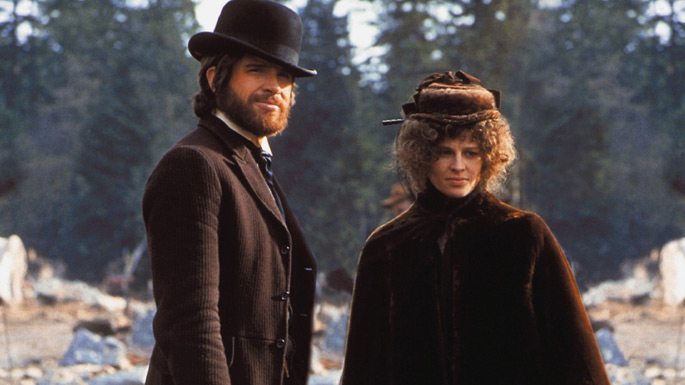
Robert Altman’s genre bending McCabe and Mrs. Miller achieved an ultra realism to distinguish it from the Westerns that came before. Set in the Pacific Northwest and shot on location in Canada, the film crew built the town as the movie was being shot. There are few cowboys or Indians, the conflict’s between settlers and corporations. And the “settlers” live on the fringes of acceptable society.
Warren Beatty stars as McCabe, the Cro-Magnon American who arrives in the mining town and sets up a successful bordello with his Cockney business partner Mrs. Miller (Julie Christie). Their uneasy relationship frames the entire film. Altman’s use of overlapping dialogue and the ensemble cast featuring many of his regular players makes for a unique atmosphere. Leonard Cohen’s music is beautifully used as well, adding mysticism to an already mysterious film.
Few filmmakers pushed the boundaries of American cinema in the 1970s more than Altman and McCabe and Mrs. Miller stands out as one of the best examples for its commitment to realism and its exploration of individuality, morality, and civilization.
6. Goodfellas (Martin Scorsese, 1989)

From the opening to closing shot the energy of Goodfellas is like a never ending stream of adrenaline. The tale of low level gangster Henry Hill (Ray Liotta) traverses four decades in a violent journey through the New York underworld.
Goodfellas is Scorsese’s funhouse version of the American dream, a dream taken to the ultimate extreme through the existential exuberance of the “wise guys.” They live by their own code and refuse to follow the rules, the catch being that anyone can get “whacked” at any moment.
Pop music worked as a signifier of time moving forward, yet not in the cheesy way films use music. Tony Bennett’s “Rags to Riches” evoked the optimism of Eisenhower’s America, while Donovan’s hippy ode “Atlantis” ironically plays during an especially violent sequence. As Henry devolves into cocaine induces paranoia, the soundtrack gets even more erratic. The music fuels the story in direct and subtle ways.
In addition to the music, Goodfellas offers narration, exuberant acting, fast paced editing, and stylized cinematography in a panorama of modern history, fueled by irreverence, drugs, chaos, and the joy of violence.
5. Andrei Rublev (Andrei Tarkovsky, 1966)
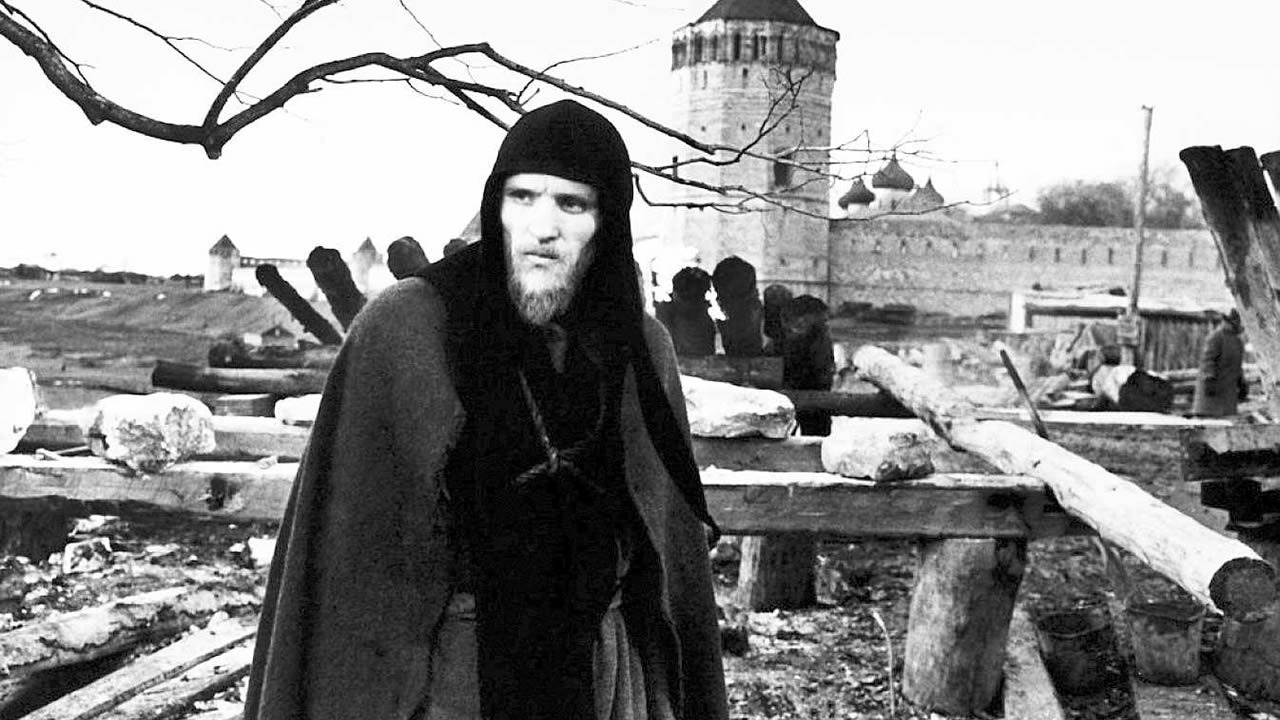
Andrei Tarkovsky’s pristine portrait of the 15th Century Russian painter Andei Rublev looks and feels unlike any other film on this list. Set in Medieval Russia, the film traces the evolution of an artist as well as the political, personal, religious, and cultural events that shaped his art.
Life is trying in Andrei Rublev; corruption and poverty are the norm. Rublev lives passively (even leaves the story at certain points) and accepts the turmoil happening around him as the result of a broken world as he battles internal conflicts over his own faith.
Moments of hope are often juxtaposed with despair. In the most horrifying sequence an army of Tartars take over a Russian town and go on to rape and pillage everything in their path as Rublev must look on with a feeling of powerlessness. History books are full of sentences that mention a town being sacked by raiders, few films have managed to capture the dread of a town being ransacked.
Unlike other historical pictures Andrei Rublev is not a costume drama nor a pageant of set pieces, but an intimate look at the nature of existence itself. Tartovsky allowed the camera to paint a portrait of his vision, achieving a profound piece of cinema while immersing the viewer in a distant century.
4. The Godfather (Francis Ford Coppola, 1972)
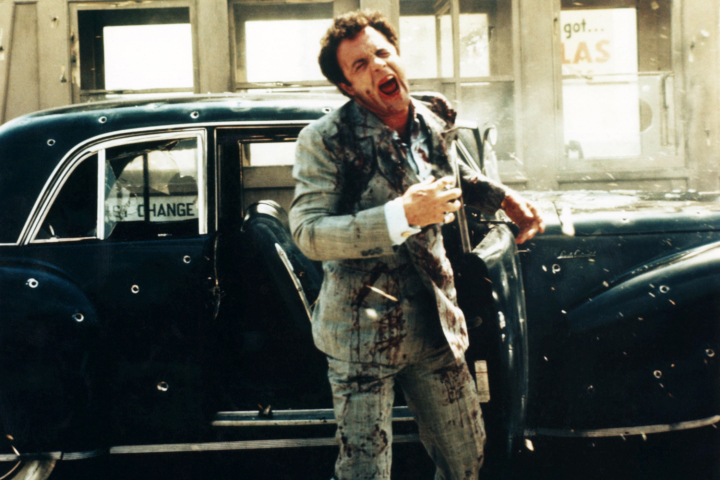
Francis Ford Coppola’s flare for grand story telling goes on display in The Godfather. History is painted on a grand canvas filled with unforgettable characterizations through the vortex of the 20th century. The years covered in the first film, 1945-1950 cover America’s emergence as a post-war superpower. The opening sequence features the Coreleone family in all their glory as the “Godfather” Vito Coreleone (Marlon Brando) holds court during his daughter’s wedding.
After rivals attempt to kill the Godfather over his refusal to get involved in the narcotics business, the family finds itself under siege and new leaders begin to emerge. The Don’s youngest son Michael (Al Pacino), who wants nothing to do with the family business at first, discovers he will lead the criminal empire into the future. Michael’s rise mirrors the post-war generation’s idealistic rise – destined to end in a dreamlike darkness.
Coppola’s themes in The Godfather reverts back to family. The depiction of a large and proud Italian family of first generation Americans who are proud of their heritage remains a potent trope in American mythology.
The Coreleone’s fortune, which rests on criminal activity, adds an extra layer of suspense and mystery. Deeper themes of history and generational relationships are handled with tenderness by the camera despite the violence. Most importantly, the first Godfather is full of memorable moments of dialogue and set sequences.
3. The Godfather Part II (Francis Ford Coppola, 1974)
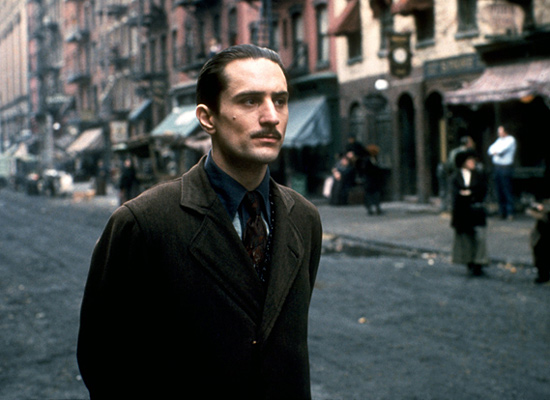
Coppola took an even more ambitious approach for The Godfather Part II. Two parallel stories are told in different time periods: the rise of young Vito in early 20th Century and Michael’s struggle to hold the family together in the 1950s. The idea of one generation setting up the fall of another makes for a grand arc. Such an approach opened up an entirely new way of representing history on film.
The two story lines parallel each other as magnificent ironies play out on the screen: As Vito’s family begins to prosper, Michael’s marriage starts to fall apart. The decisions of the past shape the future course of things. Early 20th century America is full of color and energy, while the dark shadows of 1950s Cold War culture are everywhere. As Michael leads the Coreleone family they become partners of corporations and governments, both with greedy agendas.
As a sequel, Coppola expanded greatly upon the first film. The stakes are higher and everything gets even more complicated. Gordon Willis’s cinematography achieves some beautiful and haunting moments that add scope and meaning to the scenes. Perhaps of all his contemporaries, Coppola left the deepest impression on Kubrick. Put simply, the first two Godfather films persist as milestones of the historical epic.
2. Barry Lyndon (Stanley Kubrick, 1975)
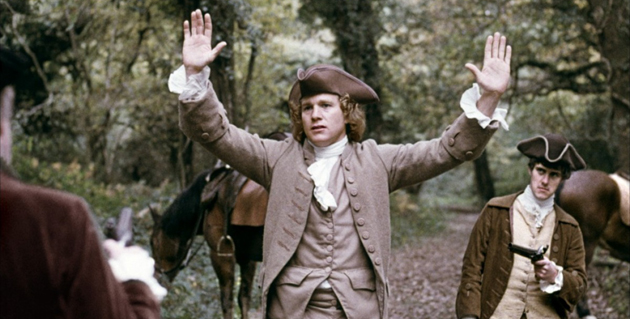
For Kubrick’s historical epic he adapted the W.M. Thackeray novel Barry Lyndon, a project that served as a substitute for what was intended to be his screen biography of Napoleon Bonaparte. Set in Mid 18th Century Europe, the film follows the unfortunate life of Redmond Barry, an Irish upstart who drifts through one situation to another.
Played with stoic poise by Ryan O’Neal, Barry engages in duels, gets involved in the Seven Years War, falls into being a professional gambler, and marries a beautiful rich widow. It’s worth comparing Barry to Kubrick’s previous protagonist Alex De Large in his 1971 film A Clockwork Orange: both are on the opposite spectrum of the anti-hero. Alex lives with existential glee but still cannot beat the system, while Barry drifts through life, but gets done in by the system.
Kubrick’s attention to detail is legendary and he went above and beyond in Barry Lyndon. The cinematography reflects the artwork of the time period, especially the pristine landscapes. Special lenses were developed to shoot in total candlelight. Kubrick’s meticulous pacing mimics the feeling of time passing, much in the way Barry sees the world.
1. Schindler’s List (Steven Spielberg, 1993)
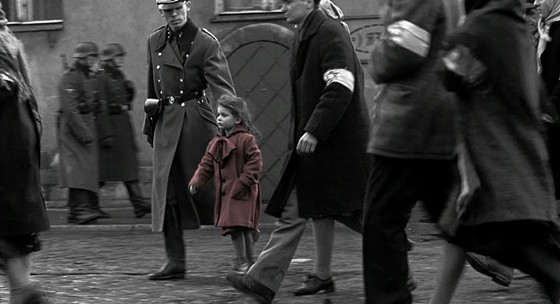
Steven Spielberg bought the rights to the Thomas Keneally novel in the early 1980s , but waited a decade before taking on such a heady topic. Schindler’s List marked a true break from the way Hollywood films portrayed history. The use of multi-layered editing, hand held camera, complex characterizations and realistic depictions of violence all broke new ground.
Schindler’s List tells the true story of Oskar Schindler, a German businessman who saved the lives of over 1000 Jews from perishing in the Nazi concentration camps. A member of the Nazi Party and a war profiteer, Schindler found his conscience and decided to do something about the terror happening around him. Liam Neeson played Schindler with the right mix of ambiguity and sympathy.
The on location shoot in Poland added yet another layer of reality. Spielberg’s filming of these scenes looks almost identical to archival footage from the Second World War.
There are sequences that recall old Hollywood as well, for example the sequence where Schindler is introduced at the night club feels like Casablanca. The liquidation of the Krakow ghetto has a cinema verite feel, as if a news crew is following the German S.S. soldiers as they kill and terrorize. The emotional farewell scene at the end, which drew criticism for being too sentimental, provided a proper catharsis.
At the same time there are incisive character studies, especially Ralph Fiennes as a sadistic commandant. Ben Kingsley as Schindler’s loyal accountant and moral conscience.
Of all the films on this list, Schindler’s List met Kubrick’s criteria. In fact Kubrick halted his own holocaust project The Aryan Papers after Schindler’s List came out, believing he could not make a better film on the topic. A potent experience over 20 years from its release, Spielberg set a new benchmark for historical representation on film.
Author Bio: Eric teaches English Composition and resides in Dayton, Ohio. A lifelong movie fan, his favorite filmmakers include Steven Spielberg, Martin Scorsese, Akira Kurosawa, Stanley Kubrick, and Quentin Tarantino. In his spare he listens to Bob Dylan, reads history and fiction, and often blogs about those subjects.